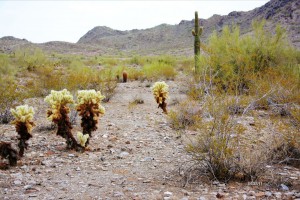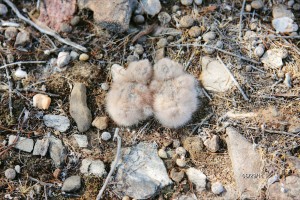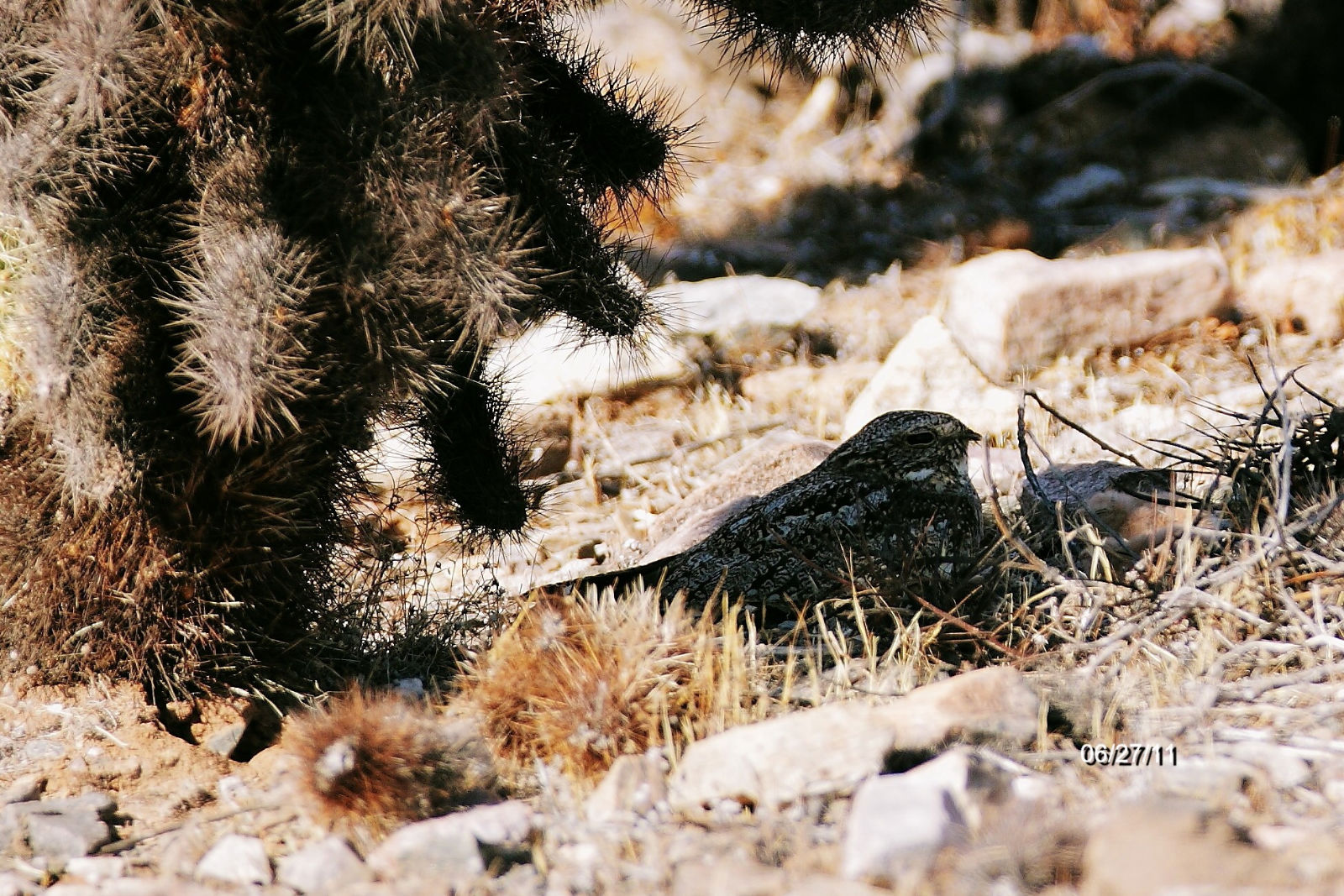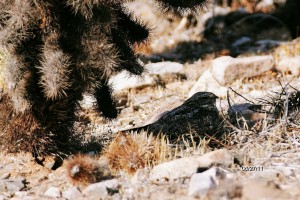Every living thing renews itself in a unique way. No two creatures handle the process in quite the same way as the other. Take for example the Mourning Dove and the Lesser Nighthawk. Both birds lay their eggs on the ground. The Dove will pick a relatively secluded spot and lay a couple of eggs. The place chosen will remain fixed until the Dove chicks fledge. This bird does not move around. The Lesser Nighthawk on the other hand also lays its eggs on the ground. Again, a couple of eggs are laid in a relatively secluded spot. Once the Nighthawk chics hatch the differences between the two birds become magnified. The Nighthawk chicks are extremely well camouflaged. The Dove chicks have no particular camouflaging. The Dove chics can be easily seen on the ground. If the female Dove picked a spot off the beaten path and away from potential predators the young have a chance of making it. The Dove breed multiple times a year to compensate for losses in their number.
a relatively secluded spot and lay a couple of eggs. The place chosen will remain fixed until the Dove chicks fledge. This bird does not move around. The Lesser Nighthawk on the other hand also lays its eggs on the ground. Again, a couple of eggs are laid in a relatively secluded spot. Once the Nighthawk chics hatch the differences between the two birds become magnified. The Nighthawk chicks are extremely well camouflaged. The Dove chicks have no particular camouflaging. The Dove chics can be easily seen on the ground. If the female Dove picked a spot off the beaten path and away from potential predators the young have a chance of making it. The Dove breed multiple times a year to compensate for losses in their number.
The Nighthawk breeds only in the summer months. Breeding is only once a year unless the young are lost early enough that a second breeding may occur. The Nighthawk chicks will maintain their invisibility as their coloration changes with maturity. In addition to their color changes they will move their “nest” site each night. In this way they can move to more secure  locations as they increase in size. For the photographer this moving about and being practically invisible presents a real challenge. Finding the new nest site and photographing the young each day requires some luck and a practiced eye. If you can see the female on the ground before she is alarmed that makes the job easier. The problem here is that she is well camouflaged. Seeing her first is rarely possible. Seeing the exact spot from where she lifts off is paramount to finding the young. Even knowing where she lifted off does not guarantee success.
locations as they increase in size. For the photographer this moving about and being practically invisible presents a real challenge. Finding the new nest site and photographing the young each day requires some luck and a practiced eye. If you can see the female on the ground before she is alarmed that makes the job easier. The problem here is that she is well camouflaged. Seeing her first is rarely possible. Seeing the exact spot from where she lifts off is paramount to finding the young. Even knowing where she lifted off does not guarantee success.
Spotting the young sitting perfectly still requires patience and a certain amount of supernatural thinking. For me the way to find them is to look for something that appears as though nothing is there. What I mean by that is that if your eyes are looking over the ground and they seem to be losing the ability to recognize objects possibly from eye-strain, then stop and look at what is causing focusing problems. Chances are that if there is no rock or dirt in the spot you see then it just might be a portal to the fourth dimension or the Nighthawk’s young! I have included some photographs of this effort for your enjoyment if you so desire. One caveat is that finding the young in a photograph is not nearly as difficult as finding them in the real world. A note about the photographs: I have dated them for organization purposes. I find that Microsoft’s “Skydrive” does not play back the images in the order loaded. That is frustrating for everyone I’m sure. I know it is for me. I can’t even number them in a unique way and expect them to play back that way! I’m still trying to make this new system work as I’d like. After all it is the wildlife and the health of the park that is what is important to convey.
Photographs and text by the late Joel Pearson. NVC is dedicated to conserving Joel’s photographs and wisdom.

